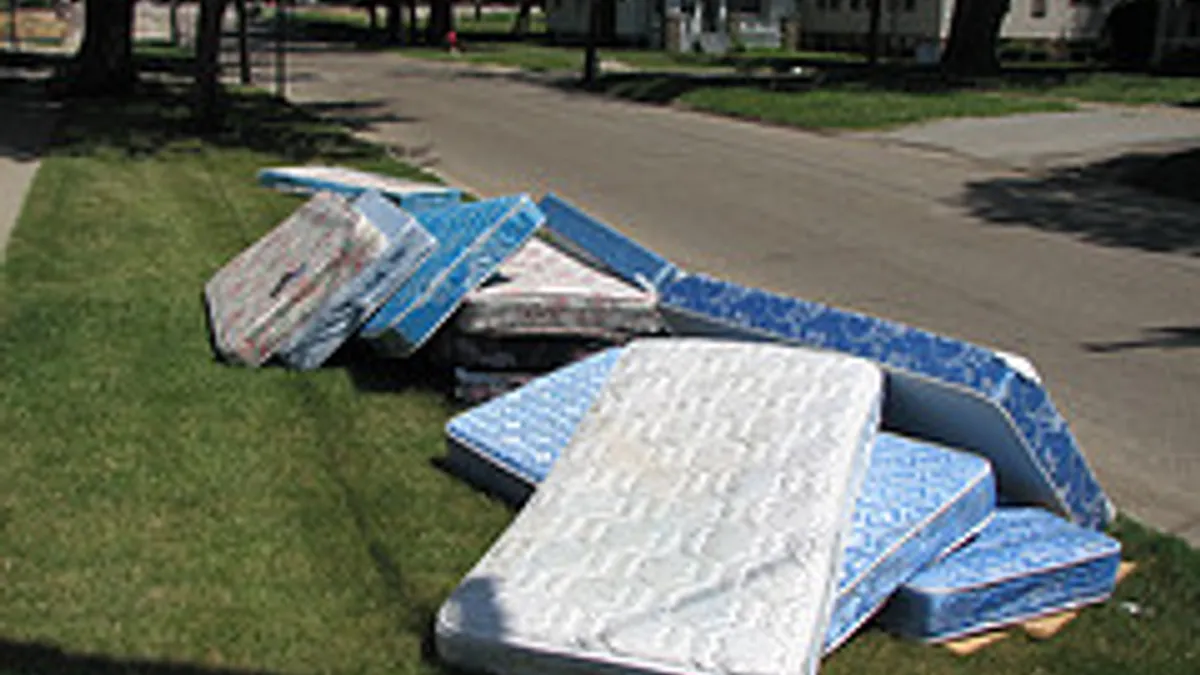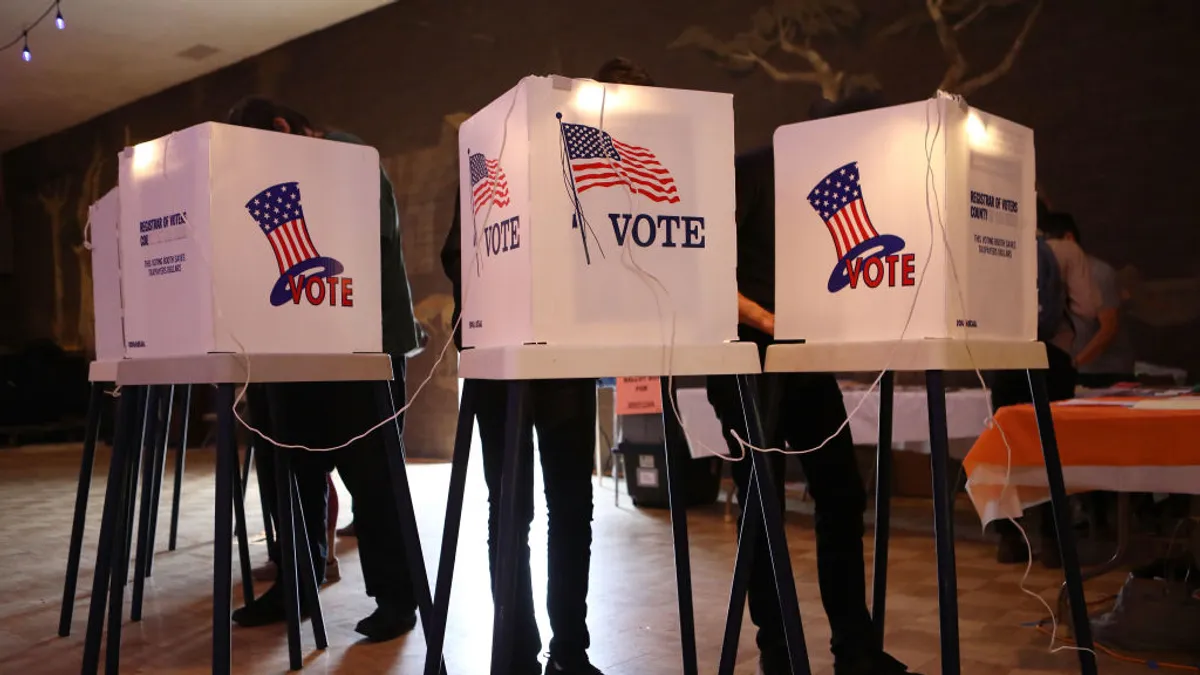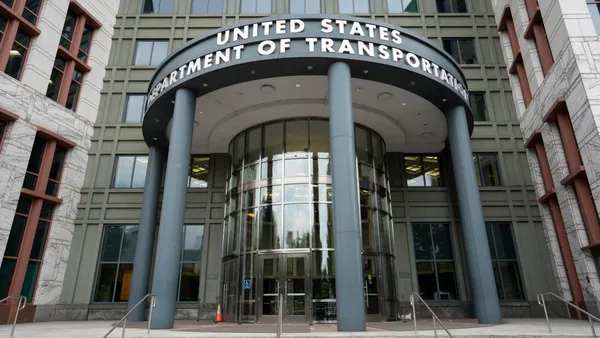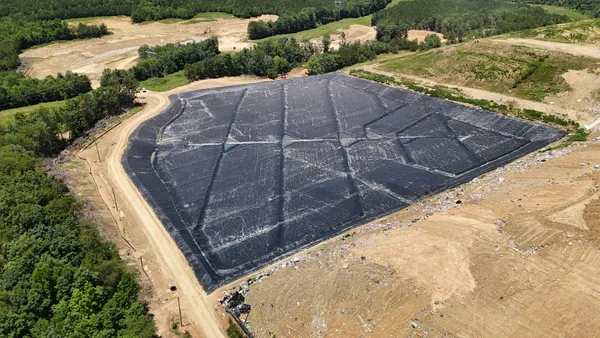Dive Brief:
- Chicago suburb Evanston, IL is considering changing its fee structure for special trash pickups for items such as mattresses and couches because the city recovers little of its cost for this service. It spends $240,000 a year in labor and $500,000 in tipping fees, footing a total bill of $746,000 according to Public Works Agency Director Dave Stoneback, as reported in the Chicago Tribune. The revenue from pickup charges generates only $91,500.
- Residents are currently billed $25 for special pickups for the first three cubic yards and incur a $10 fee for each additional three cubic yards. The charge is affixed to the resident's water bill.
- The city receives about 246 special pick-up requests a month and close to 3,000 a year. Of the roughly 1,300 requests received during a period under review, barely 10% were considered "fly-dumping" where someone other than the resident dumped the waste on or behind the resident’s property.
Dive Insight:
While "fly-dumping" isn't too much of an issue in Evanston, it's still present, as it is in many regions across the nation. City officials have had various ideas about how to better manage improperly disposed of items — some wanted to consider lowering special pick-up fees if it appeared the residents requesting special pickups were not responsible for the dumping.
Ald. Delores Holmes brought up the possibility of a public education program, teaching residents how to more efficiently use their containers. But after hearing of the current financial impact on the city she said, "maybe we have to consider raising the pick-up fees. We look at that (the program's cost) and there is just no way we can do that."
Others expressed that it was hard for city staff to determine whether bulky refuge was placed in an alley by the property owner or if it was trucked in, challenging the city in knowing how to fairly handle the situation.
Ald. Peter Braithwaite said an abandoned house in his ward became a hot spot for fly dumpers. He broached the possibility of mounting low-cost cameras on telephone poles for surveillance.












